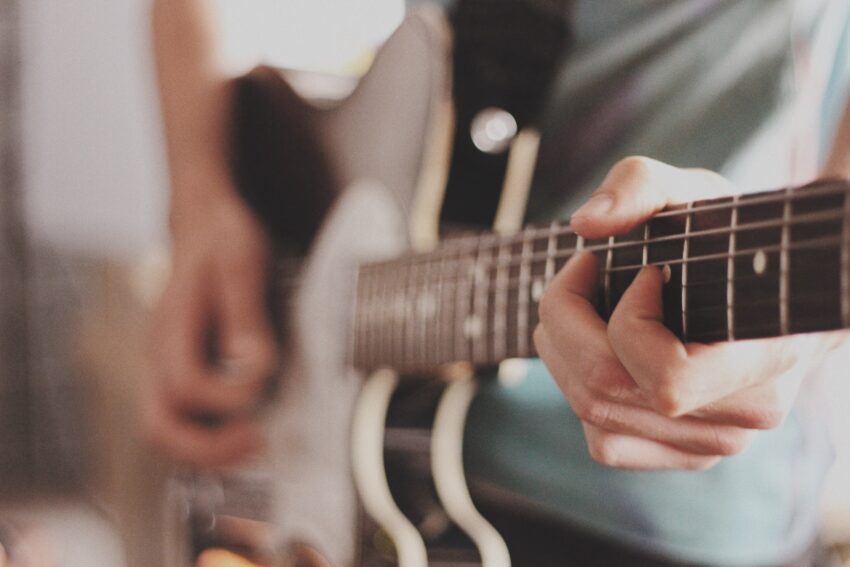As the name implies, electronic music is created using electronic instruments, combined with digital technology and other methods of changing sound using electronic devices. While traditional music relies on guitars, pianos and drums, electronic music is produced with synthesizers, sequencers, drum machines and computer programs. Electronic music has continued to gain in popularity since its inception in the late 19th century. Naturally, you’ll get the best sound with high quality parts like high-quality speakers, headphones, keyboards, bulk guitar strings and more. Keep in mind that the parts and accessories you choose for your guitar will influence the way it sounds, which in turn, plays a role in how your music sounds when you play it.
Understanding Electronic Music
Before we talk about how to integrate your guitar parts, let’s learn a little more about electronic music. Knowledge of the genre will help guide you as you choose the parts and accessories to go with your electric guitar. There are a few key elements of electronic music to consider.
- Synthesizers – musical devices used to manipulate sound.
- Sampling – using a portion of a musical score in a new piece of music.
- Drum machine – electronic instruments that create drum sounds, often used to set the beat or pattern.
- Sequencers – software that allows a musician to manipulate sound to create a piece of music.
- Digital Audio Workstations (DAWs) – software that is used to record, edit and produce electronic music.
Several genres of music are considered electronic. Some of them include the following.
- Techno – synthetic sounds, repetitive beats and a futuristic feel.
- House – four-on-the-floor beats, uplifting melodies, vocals with a soul feel.
- Trance – melodic wording, hypnotic rhythms and a transcendent feel.
- Dubstep – heavy basslines, syncopated rhythms and an aggressive sound feel.
Electronic music continues to evolve and change, so these are just a few examples, with many more across cultures.
Guitar Sound Basics
If you play an electric guitar, learning your instrument makes it easier to choose the right parts and accessories to complement its sound and the style of music you make with it. If you add vocals to your songs, your guitar should complement the sound of your voice. For that reason, being familiar with the tonal range of your instrument is important. Experimenting with the tune of your guitar helps create a rich range of sound and texture that can be applied in different ways to your electronic music.
Getting the Tone Right
Integrating other parts into the music is a vital aspect of getting the sound you want. Getting the perfect tone is something you will need to practice, and could change, based on where you’re playing. Mic placement, the acoustics of the room and the kind of recording equipment you have will all play a role in the sound you create with your guitar. Vocal comping can help you get the sound just right, so pay attention to that aspect of recording.
Using Digital Production Tools
To really enhance your guitar tracks, digital production tools will be a lifesaver. Combining your vocals with your guitar can be done incredibly well, using a collaboration software that allows you to record your voice alongside your guitar tracks. Guitar plugins are ideal for simulating the sound of amps and other effects that can help you create the perfect tone. The tools and instruments at Guyker will provide everything you need to get this process done right.
Guitar Sounds in Songwriting
Knowing how to change and manipulate the sound of your electric guitar, particularly to go with your vocals, is an important part of writing music. Perhaps you want to create a guitar melody to go with your voice, or maybe you want to contrast the guitar sound with the vocals for a unique piece of music. Experimenting and trying new things with your guitar will help you become a better songwriter, so make it part of your process.
Adding Other Instruments
To create optimal balance and harmony, you can blend the sound of other instruments with your guitar. To facilitate this aspect of creating music, collaboration software comes in handy. It allows you to make changes to the various instruments so you can produce precisely the sounds you’re looking for with each of them. At the same time, take into account the vocals so that your finished piece harmonizes perfectly.
One of the best ways to learn the art and craft of integrating guitar and other instruments into your music is to listen to other music. Hearing it done by other artists is a fantastic way to make connections and understand how to blend sounds with your guitar to create the music you love. It’s a process and the more you work at it, the better you’ll get it, but be sure you enjoy the ride along the way.



